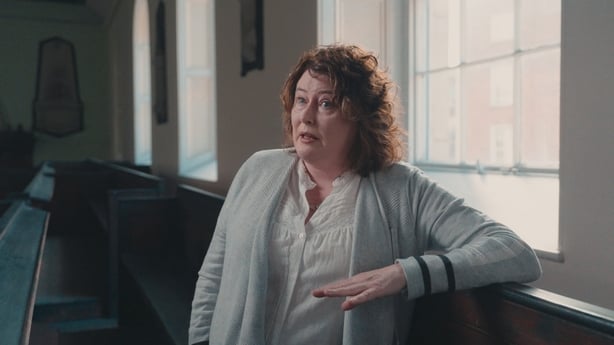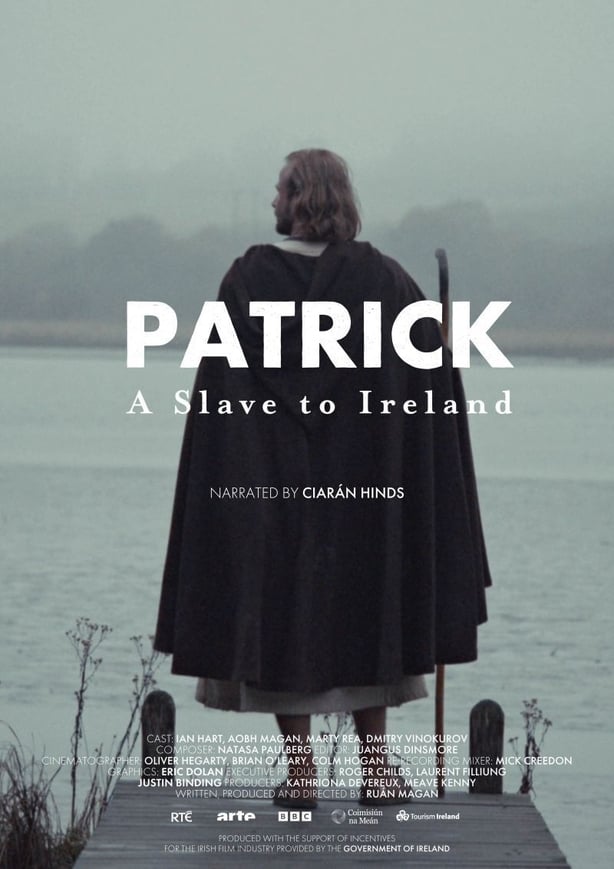Analysis: If the Patrick of legend is implacable and authoritative, the actual historical Patrick was a fascinatingly flawed man mired in conflict
By Elva Johnston, UCD
Patrick is such an ubiquitous Irish name that 'Paddy' serves as shorthand for ‘Irish person’. Yet, St Patrick was not Irish; he was a fifth-century Romano-Briton, someone of British Celtic origins whose ancestors had been incorporated into the Roman Empire. Many of the things that are popularly associated with Patrick – the shamrock, driving away snakes, an episcopal appointment approved by the Pope himself – are later inventions.
These inventions were designed to smooth a knotty figure into the shape of what a saint could and should be. The Patrick of legend is a great bishop, a defeater of druids, a miracle-maker and pilgrimage creator. He is certain, implacable and authoritative.
The actual historical Patrick, a man mired in conflict, became lost. This Patrick was the son of a civic official, the grandson of a priest and a member of a slave-owning family. He was fascinatingly flawed, a man whose traumatic experiences of being enslaved in Ireland upended his entire life.
Excerpt about Croagh Patrick, from Patrick - A Slave to Ireland which broadcasts on RTÉ 1 and RTÉ Player on St Patrick's Day at 7pm
Patrick was violently stolen from his comfortable small estate at the age of 16 and trafficked to the mountainous west of Ireland. There, he found God while toiling in the ice and rain. He escaped and returned home to Britain. Patrick entered the religious life but continuously felt the pull of his past; it inspired a return to Ireland to preach Christianity to a people he describes as worshipping idols and the sun.
Trauma lies at the heart of Patrick’s writings. He composed two major surviving texts, his Confessio (Confession) and the Epistola ad Milites Corotici (Letter to the Soldiers of Coroticus). These were written in Ireland for audiences on the island and in Britain and aim to bolster Patrick’s position, especially his authority as a bishop. This authority seems to pivot on Patrick being a self-proclaimed bishop, one who was opposed by the British ecclesiastical hierarchy.
The Confessio gives the greatest insight into these challenges as it is consciously structured as a self-defence. Patrick attempts to prove his authenticity while also ensure ongoing material support to bolster his fledgling Irish Christian communities. This was particularly important because Patrick did not have substantial political backing in Ireland.
We need your consent to load this rte-player contentWe use rte-player to manage extra content that can set cookies on your device and collect data about your activity. Please review their details and accept them to load the content.Manage Preferences
From RTÉ Brainstorm, CSI St Patrick: just where is the saint's body?
This was complicated by the island’s division into a multitude of kingdoms. Patrick had to continually negotiate free-passage and a freedom to preach, region by region. By the seventh century this complex truth had been replaced by stories of Patrick converting the King of Tara and the people of the island in a straightforward, simple and triumphant manner.
Were there deeper reasons motivating Patrick to write? His reputation as a controversial figure appears to be the primary catalyst. Unfortunately, we only have his side of the story: we infer the nature of the complaints against Patrick from his own words. One has only to think of any modern political debate where two or more sides present opposed interpretations of the same events. We can weigh the different arguments to determine which is most convincing but we do not have this luxury when reading Patrick.
On the other hand, Patrick’s experience of trauma makes him unusually self-revelatory. For example, he admits to a sin that he committed in his youth, around the age of 15. He confided this sin to a friend, while feeling anxious, and this friend betrayed Patrick’s trust and told others. We are left to guess what the sin was, one which took place over the course of no more than an hour and before Patrick had overcome ‘weakness’. It is possible that it was sexual, especially as Patrick is so careful to mention his adult devotion to chastity. Whatever its nature, it is scandalous enough, according to Patrick, to turn the British hierarchy against him. His defence is twofold: he is a changed man and one chosen by God.
Trailer for Patrick - A Slave to Ireland to be broadcast on RTÉ 1 and RTÉ Player on St Patrick's Day at 7pm
But is this the entire story? Another strand of the Confessio focuses on financial transactions. Patrick recounts the payments he has to make to kings, to their sons and to those responsible for making law, all for the purpose of negotiating Irish society. Gift-giving, the exchange of valuable items, was foundational to Patrick’s conversion strategies and it enabled him to operate painstakingly between kingdoms.
What were the origins of Patrick’s wealth? Patrick implies that he sold his estate (it appears that he was an only son, possibly an only child). He also admits to receiving gifts from his followers, most memorably in a scene where Patrick describes female converts throwing ornaments onto the altar. Patrick reassures the reader that he gave them back, being careful of his own personal reputation.

It is clear that this reassurance was necessary because it was believed that Patrick was personally profiting. Furthermore, Patrick's emphasis on his chaste relationships with women, such as those before the altar, may well reflect back on his sin, something that he had to counter.
As both the Confessio and the Epistola emphasise, Patrick's mission depended upon the support of women from all walks of Irish life. They formed the bedrock of these early Christian communities. In this context, it seems likely that Patrick’s pragmatic financial strategies combined with his personal history gave his critics cause to ask questions. The Confessio is Patrick’s answer.

Patrick’s feastday of March 17th has been celebrated for centuries and he has been reinterpreted again and again over that span. In the process, it is important not to lose sight of Patrick the exile, a man shaped by trauma and controversy, a man whose deeply admitted flaws are far more compelling than the idealised Apostle of Ireland who replaced him.
Patrick - A Slave to Ireland is broadcasts on RTÉ 1 and RTÉ Player on St Patrick's Day at 7pm
Follow RTÉ Brainstorm on WhatsApp and Instagram for more stories and updates
Dr Elva Johnston is an Associate Professor in the School of History in UCD. She is a former Research Ireland awardee.
The views expressed here are those of the author and do not represent or reflect the views of RTÉ

